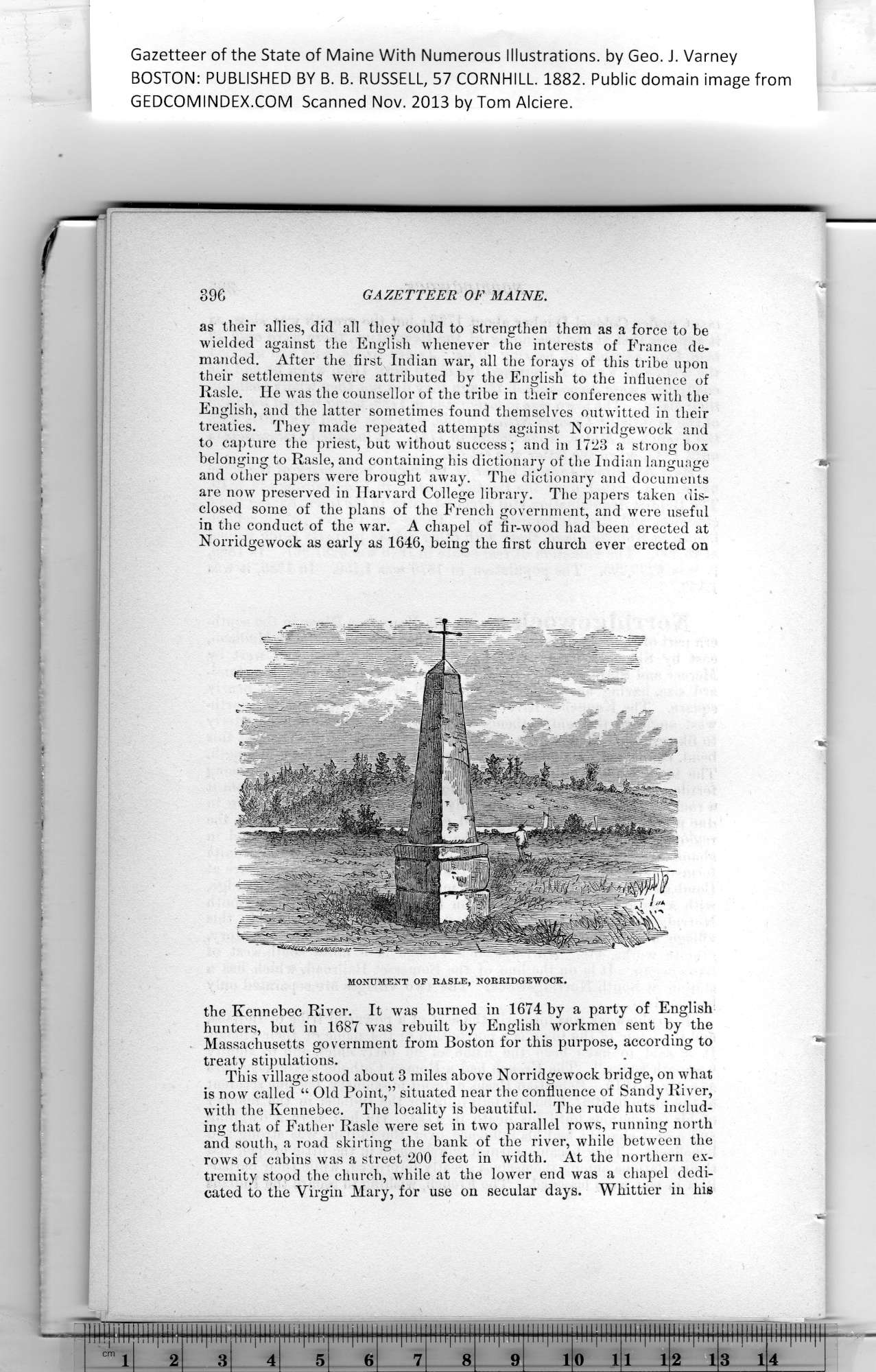|
Gazetteer of the State of Maine With Numerous Illustrations, by Geo. J. Varney
BOSTON: PUBLISHED BY B. B. RUSSELL, 57 CORNHILL. 1882. Public domain image from
396 GAZETTEER OF MAINE.
as their allies, did all they could to strengthen them as a force to he
wielded against the English whenever the interests of France de-
manded. After the first Indian war, all the forays of this tribe upon
their settlements were attributed by the English to the influence of
Rasle. He was the counsellor of the tribe in their conferences with the
English, and the latter sometimes found themselves outwitted in their
treaties. They made repeated attempts against Norridgewock and
to capture the priest, but without success; and in 1723 a strong box
belonging to Rasle, and containing his dictionary of the Indian language
and other papers were brought away. The dictionary and documents
are now preserved in Harvard College library. The papers taken dis-
closed some of the plans of the French government, and were useful
in the conduct of the war. A chapel of fir-wood had been erected at
Norridgewock as early as 1646, being the first church ever erected on
the Kennebec River. It was burned in 1674 by a party of English
hunters, but in 1687 was rebuilt by English workmen sent by tbe
Massachusetts government from Boston for this purpose, according to
treaty stipulations.
This village stood about 3 miles above Norridgewock bridge, on what
is now called “ Old Point,” situated near the confluence of Sandy River,
with the Kennebec. The locality is beautiful. The rude huts includ-
ing that of Father Rasle were set in two parallel rows, running north
and south, a road skirting the bank of the river, while between the
rows of cabins was a street 200 feet in width. At the northern ex-
tremity stood the church, while at the lower end was a chapel dedi-
cated to the Virgin Mary, for use on secular days. Whittier in his
PREVIOUS PAGE ... NEXT PAGE
This page was written in HTML using a program written in Python 3.2
|
